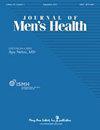前列腺动脉栓塞对真中叶增大患者的影响
IF 0.6
4区 医学
Q4 Medicine
引用次数: 0
摘要
背景:前列腺动脉栓塞术(PAE)是一种新兴的治疗良性前列腺增生(BPH)的微创治疗方法,能够降低前列腺体积(PVol)和IPP。真中叶(TML)的存在与膀胱出口梗阻(BOO)相关,引起下尿路症状(LUTS)。在这项研究中,我们探讨了PAE在LUTS患者TML改善中的作用。方法:回顾性分析2015年4月至2021年9月期间接受PAE治疗的47例男性患者。在PAE前和PAE后2个月分别用MRI测量TML、IPP和PUA的体积。治疗后48小时通过对比增强MRI (ceMRI)评估TML的成功断流。结果:TML技术栓塞成功率为72%。2个月后,前列腺总积(PVol)下降25.8±13.3%(由72.1±39.8 cc降至52.5±27.9 cc, p < 0.000)。在技术上成功地对TML进行PAE后,TMLVol降低了32.1±21.5%(从10.6±16.1 cc降至7.2±13.1 cc, p < 0.000), IPP降低了29.3±15.5%(从16.3±7.4 mm降至11.9±6.6 mm, p < 0.000)。相比之下,在技术上不完全断流TML后,TMLVol仅下降7.2±17.7%(从8.4±9.3 cc降至7.5±8.9 cc, p = 0.089), IPP仅下降10.9±8.8%(从16.4±7.3 mm降至14.6±6.7 mm, p = 0.003)。TML成功栓塞和不完全栓塞后PUA的栓塞率分别为11.6±7.6和12.2±9.4 (p均< 0.001)。结论:本研究首次表明PAE能够减少TML体积。此外,即使是由html引起的IPP, PAE也能够降低IPP。本文章由计算机程序翻译,如有差异,请以英文原文为准。
Impact of Prostatic Artery Embolization in Patients with Enlarged True Middle Lobes
Background : Prostatic artery embolization (PAE) is an emerging minimal-invasive therapy of benign prostatic hyperplasia (BPH), able to reduce the prostatic volume (PVol) and the IPP. The presence of a true middle lobe (TML) is associated with bladder outlet obstruction (BOO), causing lower urinary tract symptoms (LUTS). In this study we investigate the effect of PAE in TML improvement in patients with LUTS. Methods : A retrospective analysis was done of 47 men treated with PAE from April 2015 to September 2021. The volume of the TML, IPP, and PUA were measured on MRI prior and 2 months after PAE. Successful devascularization of the TML was evaluated by contrast-enhanced MRI (ceMRI) 48 hours after therapy. Results : The TML was successfully embolised technically in 72%. After two months, the total volume of the prostate (PVol) was reduced by 25.8 ± 13.3% (from 72.1 ± 39.8 cc to 52.5 ± 27.9 cc; p < 0.000). Following a technically successful PAE of the TML, the TMLVol decreased by 32.1 ± 21.5% (from 10.6 ± 16.1 cc to 7.2 ± 13.1 cc; p < 0.000), and the IPP was reduced by 29.3 ± 15.5% (from 16.3 ± 7.4 mm to 11.9 ± 6.6 mm; p < 0.000). In contrast, after a technically incomplete devascularisation of the TML the TMLVol decreased by only 7.2 ± 17.7% (from 8.4 ± 9.3 cc to 7.5 ± 8.9 cc; p = 0.089), and the IPP was reduced by only 10.9 ± 8.8% (from 16.4 ± 7.3 mm to 14.6 ± 6.7 mm; p = 0.003). The currecture of the PUA after a successful and after an incomplete embolization of the TML was comparable with 11.6 ± 7.6 and 12.2 ± 9.4, respectively (in both p < 0.001). Conclusions : Our study firstly shows that PAE is able to reduce TML volume. Furthermore, PAE is able to reduce the IPP even if caused by a TML.
求助全文
通过发布文献求助,成功后即可免费获取论文全文。
去求助
来源期刊

Journal of Men's Health
Medicine-Urology
CiteScore
0.70
自引率
28.60%
发文量
153
审稿时长
10 weeks
期刊介绍:
JOMH is an international, peer-reviewed, open access journal. JOMH publishes cutting-edge advances in a wide range of diseases and conditions, including diagnostic procedures, therapeutic management strategies, and innovative clinical research in gender-based biology. It also addresses sexual disparities in health, life expectancy, lifestyle and behaviors and so on. Scientists are encouraged to publish their experimental, theoretical, and descriptive studies and observations in as much detail as possible.
 求助内容:
求助内容: 应助结果提醒方式:
应助结果提醒方式:


